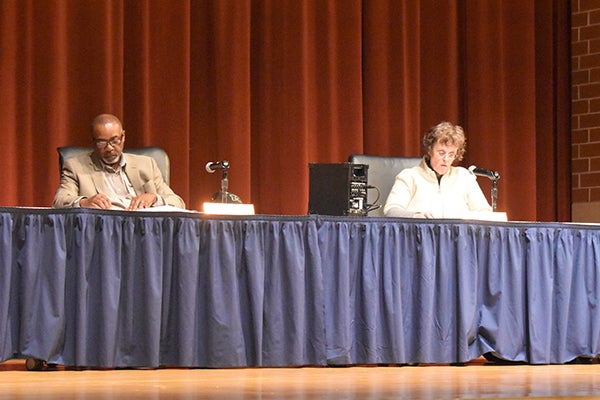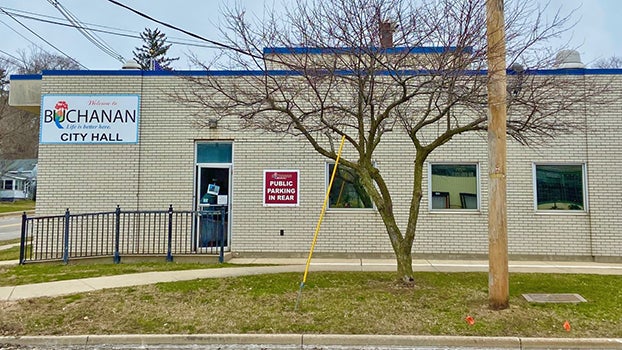Dowagiac Education Report: Test scores down, poor students hit hardest by pandemic
Published 6:14 pm Thursday, February 24, 2022
|
Getting your Trinity Audio player ready...
|
DOWAGIAC — Since the beginning of the COVID-19 pandemic, students across the state of Michigan have seen a decrease in their standardized test scores, and Dowagiac is no different.
Dowagiac Deputy Superintendent Dawn Conner delivered an education report stating the school continues to lag behind statewide testing averages. Overall, the district has seen a drop in standardized test scores, with economically disadvantaged students performing disproportionately worse since the 2019-20 school year. Connor also detailed ways the district is seeking to address these issues.
Testing
According to the Michigan Department of Education, he Michigan Student Test of Educational Progress (M-STEP), is a computer-based assessment administered to grades 3-8 designed to gauge how well students are mastering standards developed to outline what students should know in order to be prepared to enter the workplace, career education training, and college.
While Dowagiac’s overall decline in M-STEP proficiency was less than the overall decline statewide, the district is still about 15 percentage points less proficient than the statewide average in both math and language arts after the 2020-21 school year.
“Kids who are [testing] below grade level seem to struggle more, which would only stand to reason since those are the kids that are more dependent upon our day-to-day instruction in the classroom,” Conner said. “Kids who are on grade level have done more. I can’t speak to exactly why. … but kids who are economically disadvantaged have suffered more because of the pandemic.”
There is a lack of scientific research as to why specific pandemic numbers have dropped among economically disadvantaged students, but a 2012 Brookings Institute study on the topic said “poor children do worse in school partly because their families have fewer financial resources but also because their parents tend to have less education, higher rates of single and teen parenthood, poorer health, and other characteristics that place their children at risk for less successful outcomes.”
According to data presented by Conner, the percentage of students who were not proficient on the M-STEP increased from 38 percent in 2019 to 44 percent in 2021. Additionally, proficiency scores increased for non-economically disadvantaged students, while economically disadvantaged student proficiency decreased.
Economically disadvantaged students are defined as students who are eligible for free lunch or reduced-price lunch, and more district students are in that category than previous years. According to the Center for Educational Performance and Information, from 2019-20 to 2020-21, economically disadvantaged students in the district increased from 77 percent to nearly 85 percent of total students in the district. Statewide, the average is roughly 50 percent.
“It could be a variety of reasons for this,” Conner said. “But without question, we have more students on free and reduced lunch than we had in years prior.”
Mental health
Conner also reported an increase in district absences, and said that may be a contributing factor in the declining test scores. From 2018-19 to 2020-21, the district reported an increase of about 20,000 section absences.
Since March 13, 2020, there have been 19 days of no school, 37 days of virtual learning with packets and between 45-75 days of virtual learning depending on level, according to Conner. Since the beginning of the 2021-22 school year, the district has reported 297 confirmed COVID-19 cases, contributing to the absences.
“That’s just to suggest that we know having kids in the schools makes a big difference,” Conner said. “If we’re not able to do that – the way we do it now – it’s going to have an impact on students.”
Conner’s report also took student mental health into consideration, citing parental survey data from Lurie Children’s Hospital which shows parents’ top concern during the pandemic was the social isolation their children had to endure.
“We would be remiss if we didn’t talk about the social and emotional impact that the pandemic has had on our students,” Connor said.
Taking action
Because of these findings, Conner said the school has and will continue to use federal covid relief funding, as well as other sources of funding, to address the issues of declining test scores, economic disadvantages and student mental health.
“Learning loss will be addressed through increased technology hardware and software to give students learning opportunities during COVID-impacted times,” wrote Conner, in the packet of information distributed to council members.
According to Conner, funds have also been used, or will be used in the future, in the following areas:
- Enhancements to curricular areas to support project-based interactive experiences
- Purchases of assessment kits to monitor learning gaps in certain areas
- Additional electives for students making the transition to middle school and high school.
- Additional staff training and program implementation
- Inclusion of culturally diverse learning materials
- More after school programming
- Take home bags to engage families in the learning process
- Additional staff to minimize split classes
After the presentation, School Board President Ronda Sullivan thanked Conner for her in-depth report.
“I’m excited for what those things are going to look like moving forward,” Sullivan said. “Just assessing the needs of our students, obviously they should be the number one priority. With that, thank you to all the teachers that are here tonight. We know that what you do goes beyond the classroom.”







